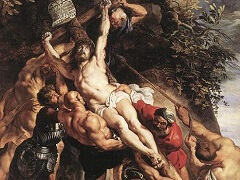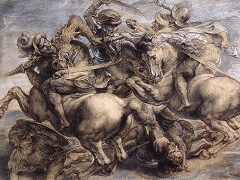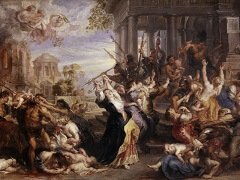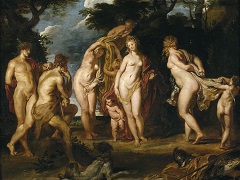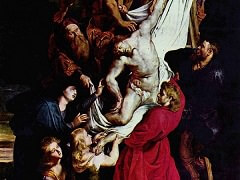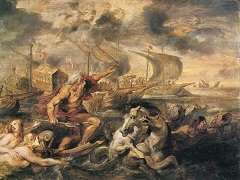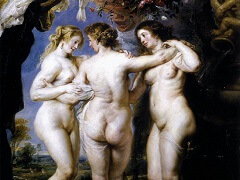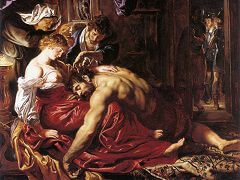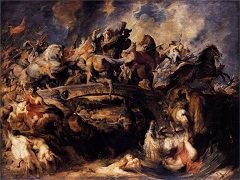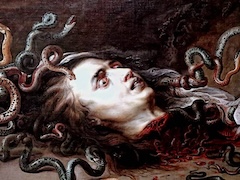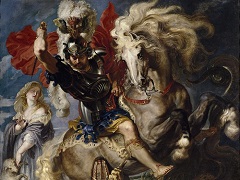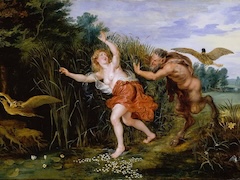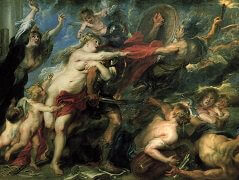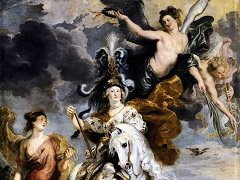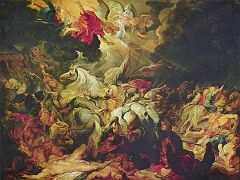The Fall of Phaeton, 1604 by Peter Paul Rubens
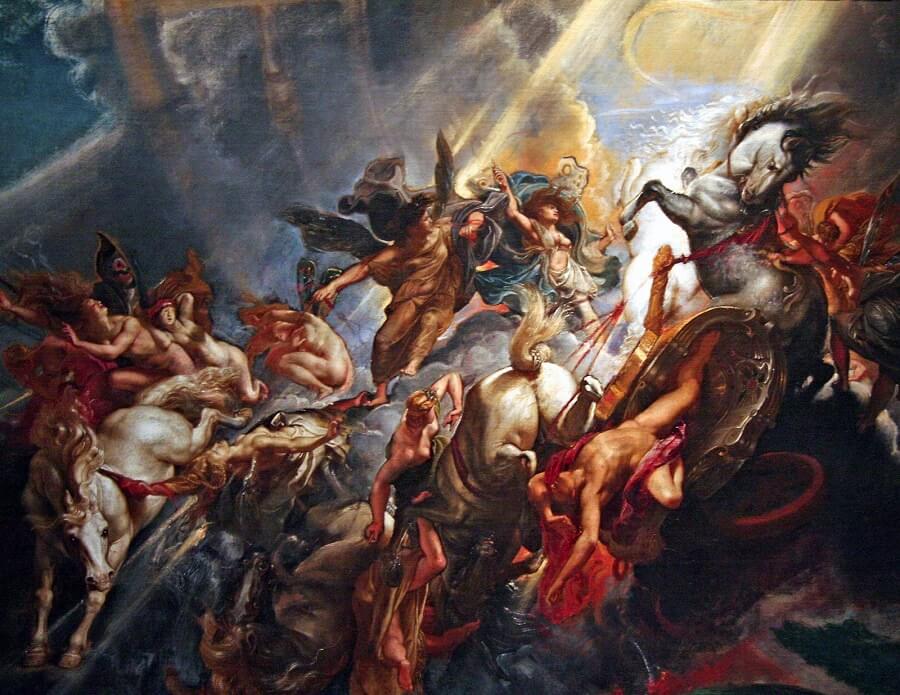
Phaeton, Apollo's son, begged his father to allow him to drive the chariot of the sun across the sky. In the hands of the rash youth, who had neither the strength nor the experience to control the chariot, the horses bolted, scorching everything in their path with the sun's heat. The butterfly - winged female figures, personifying the seasons and hours, react in terror as the earth below bursts into flame. Even the great astrological bands that arch through the heavens are disrupted. To save the universe from destruction, Zeus, king of the gods, throws a thunderbolt, represented here by a blinding shaft of light. As the chariot disintegrates, Phaeton plunges to his death.
Rubens painted The Fall of Phaeton in Rome. His study of works by Leonardo da Vinci, Raphael, and Michelangelo influenced his evocation of complex poses and a powerful sense movement. The lighting reveals the artist's attention to Venetian artists as well. Rubens continued to work on the painting over a number of years. He likely found the subject - which warned of the need for personal restraint and responsibility - congenial to his own philosophical beliefs.

